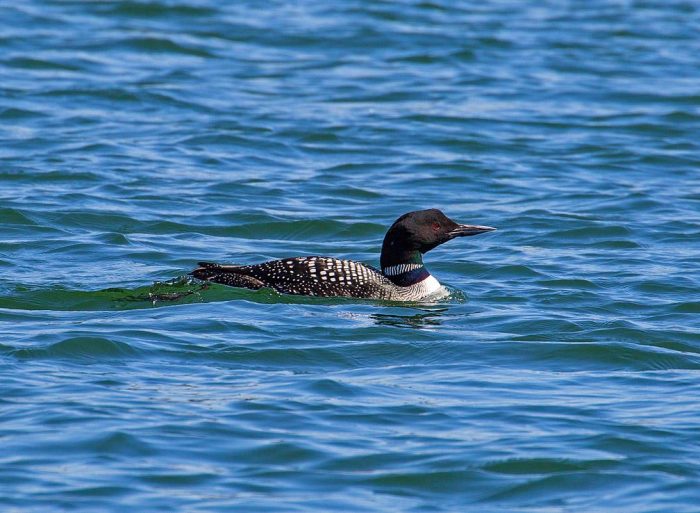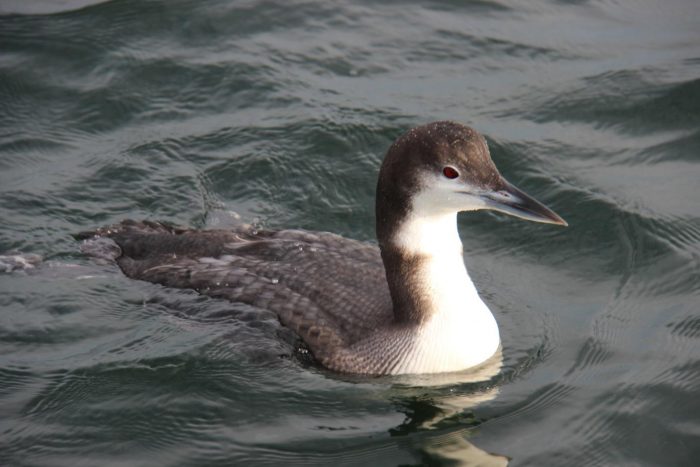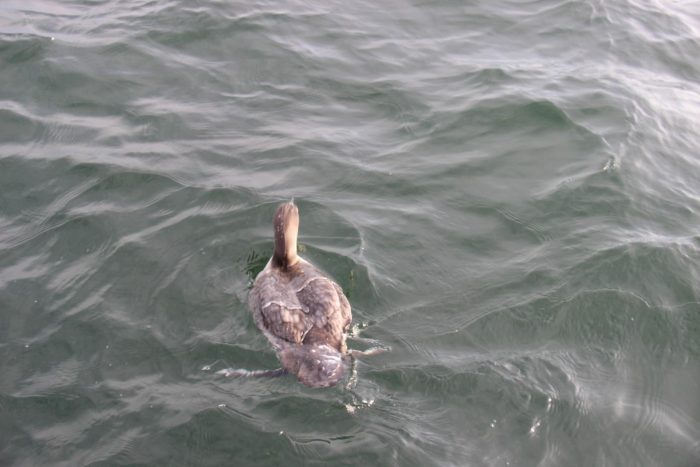February 6, 2017 – “Little Miss Judy’s Believe It or Not story! Thanks for Reading!
Fishing statement: To try to ensure that fishing stays in the hearts of those that love it and to help the ones that are going too!

Little Miss Judy’s Believe It or Not! – As it turns out, the common loon is not so common after all!
This is a grand photo of a common loon taken by Bill Vanderford. In the summer months adults sports these colors, which I think are great! During the months from September through March, they are wearing feathers of plain gray with a white throat. Over the years and after doing a little checking on the net I found that what I thought I was seeing was actually happening. I have watched loons try to take off from a sitting on the water position and it seems it takes quite a flapping distance to accomplish flight. Some loons have landed or surfaced close to my boat while I am making way and they frantically move by flapping not flying away. And I have always wondered why they take so long to take flight. Well, a loon is much like an airplane meaning they need a runway to take off. What does this mean? According to what I am told on some occasions, it can take up to a ¼ mile for a loon to take flight. So when they land in the ocean they have plenty of space to flap their wings for a safe take off. However, when they land in small lakes or wet parking lots they sometimes get stranded.

Here’s a picture I took this month (Januarys 2017) of a common loon now sporting his fall/winter feather plumage. Every time I hear and see one of these loons I always think about the released 1981 movie “On Golden Pond!” Now I am showing my age for sure! I don’t know if you can see this or not, but loons have the most striking red eyes that I have ever seen! This adult bird is giving us a close-up view for sure!

Another amazing thing about the common loon is the fact that water doesn’t and cannot wet this bird. It protective covering won’t allow it! Check out in the picture the way the water is rolling off this bird’s back. No towels needed here!
While making way in the ocean I have watched and often wondered why the loons look like they are at stations. Well, then I find out that they communicate so that they can band together to round up prey. According to those that know, this bird, while underwater, attacks, and eats. It has inverted spikes in its mouth that allow it to hold its intended meal, turn it around head first, and then quickly down the hatch it goes. This bird is one heck of a moving machine because it can accomplish speeds while in a flight to an upwards of 70 mph and it can also make short technical moves under the water just like a submarine. I know it is hard to see in these photos, but the loon’s feet are located way back meaning not located like those of regular seabirds or ducks. So, therefore, walking on land is limited for this bird. And all if this leaves me to wonder why the plight of this birds so different from all the others?
Thanks for reading!
Captain Judy Helmey
Miss Judy Charters
Kicking Fish Tail Since 1956!
124 Palmetto Drive
Savannah, Georgia 31410
(912)-897-4921 or (912)-897-2478
(912)-897-3460 fax
Fishjudy2@aol.com